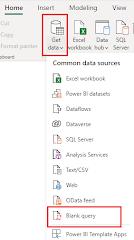Power BI Interview Questions and Answers for Experience.
Power BI Interview Questions and Answers for Experience.
1) What is the difference between Power BI and other BI tools?
Answer: Power BI is known for its integration with Microsoft products and ease of use. Unlike some BI tools, it allows for self-service analytics and is scalable from small to enterprise-level solutions.
2) Explain the importance of the star schema in Power BI data modeling.
Answer: The star schema is crucial for optimizing query performance in Power BI. It involves creating a central fact table connected to dimension tables, reducing the complexity of queries and improving response times.
3) How does the Power BI data model handle many-to-many relationships?
Answer: Power BI uses a bridge table or an intermediary table to handle many-to-many relationships. This table resolves the ambiguity by breaking down the relationship into two one-to-many relationships.
4) What is the role of the Power BI Performance Analyzer tool?
Answer: The Power BI Performance Analyzer tool helps identify and optimize performance issues in reports by analyzing query times and resource usage for each visual element.
5) Explain the concept of Row Context and Filter Context in DAX.
Answer: Row Context is the current row being evaluated, and Filter Context is the set of filters applied to the calculation. Understanding these contexts is crucial for writing accurate and efficient DAX formulas.
6) How can you optimize Power BI reports for faster performance?
Answer: Techniques for optimizing Power BI reports include minimizing the use of calculated columns, optimizing DAX measures, reducing the number of visuals on a page, and utilizing summary tables.
7) What is the purpose of the CALCULATE function in DAX?
Answer: The CALCULATE function in DAX is used to modify the filter context within a calculation. It allows for dynamic changes to filters and is often used in creating complex measures.
8) Explain the differences between Power BI DirectQuery and Import modes.
Answer: In Import mode, data is loaded into the Power BI data model, whereas DirectQuery allows Power BI to generate queries directly against the data source in real-time, avoiding data import.
9) How do you handle incremental data loading in Power BI?
Answer: Incremental data loading involves updating the Power BI dataset with only the new or changed data. This can be achieved using Power Query transformations or by utilizing a date or timestamp column.
10) What is the Power BI REST API, and how can it be used in reporting?
Answer: The Power BI REST API allows for programmatic access to Power BI resources. It can be used to embed Power BI reports and dashboards in custom applications or automate administrative tasks.
11) Explain the role of Power BI Embedded in application development.
Answer: Power BI Embedded allows developers to integrate Power BI reports and dashboards directly into custom applications, providing a seamless analytics experience for end-users.
12) How does Power BI handle data security, and what is the role of Row-level security?
Answer: Power BI provides data security through features like Row-level security, which restricts access to specific rows of data based on user roles. It ensures that users see only the data relevant to their roles.
13) What is the Common Data Model (CDM) in Power BI?
Answer: The Common Data Model is a standardized and extensible data schema used by Power BI to facilitate data interoperability and seamless integration between different applications and services.
14) Explain the purpose of Power BI Paginated Reports.
Answer: Power BI Paginated Reports are traditional, pixel-perfect, and print-friendly reports used for detailed, formatted, and printable documents. They are suitable for operational and transactional reporting needs.
15) How can you integrate Power BI with Azure services like Azure Data Lake Storage?
Answer: Power BI can be integrated with Azure services using connectors. For Azure Data Lake Storage, you can use the Power BI Dataflow feature to ingest, transform, and load data from Data Lake Storage into Power BI.
16) What is the role of the Power BI Data Gateway in a corporate environment?
Answer: The Power BI Data Gateway enables secure data transfer between on-premises data sources and the Power BI service. It allows for scheduled data refreshes and live connections to on-premises data.
17) Explain the use of Power BI Apps and their benefits.
Answer: Power BI Apps are pre-packaged solutions containing dashboards, reports, and datasets. They simplify content distribution, making it easy to share and deploy standardized analytics solutions across an organization.
18) How can you optimize DAX performance in large datasets?
Answer: To optimize DAX performance, consider using summary tables, avoiding the use of too many calculated columns, and optimizing relationships. Additionally, using appropriate DAX functions and expressions is crucial.
19) What is the Power BI Composite Model, and when would you use it?
Answer: The Power BI Composite Model allows for combining DirectQuery and Import modes in a single report. It is useful when dealing with large datasets that require a mix of real-time and imported data.
20) Explain the concept of Power BI Mobile Report Publisher.
Answer: Power BI Mobile Report Publisher is a tool for designing and creating reports specifically tailored for mobile devices. It ensures optimal viewing and interaction with reports on smartphones and tablets.
These questions cover various aspects of Power BI, and preparing for them will help you showcase your expertise in Power BI during interviews.
Feel free to ask any questions about Power BI. I am here to help you.
Happy Learning! 😊

Comments
Post a Comment